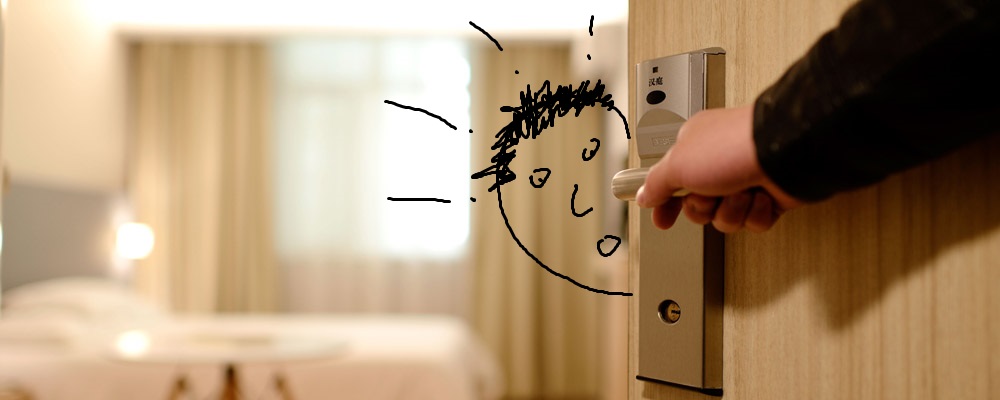While people watching on a recent trip, I started wondering about hotel guests. More specifically about their psychologies. Are the people who frequent certain brand hotels similar to each other? Are they similar across geographies? Do budget hotel guests differ from luxury? And if so, how?
Our setup was straightforward: Take matching hotels across two geographies representing luxury, upscale and midscale/budget brands. We looked at 38 hotels: 19 in Chicago and 19 in San Francisco.
We ran 10,000 data points through our psychographic engine – what follows is a summary of findings.
Clustering across all hotels and both geographies we came up with 6 clusters which show that although guests of the same brand are typically in the same cluster, the clusters are more aligned to the category of hotel. It means that people in a particular cluster are more alike to each other than folks in another cluster. This is an interesting finding considering we didn’t use any cost information or demographic data – this is pure psychology!
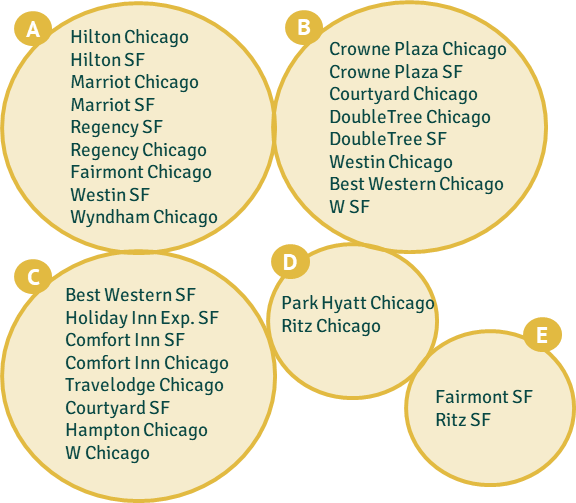
So, guests cluster along category lines but I wanted to see how various midscale and upscale hotels (within a cluster) compare in terms of key traits. It turns out there are clear sub clusters. If we look at how midscale hotel guests group across four (of many) traits, we can see what appears to be two sub clusters: the Holiday Inn Express and the Super 8 tend to attract guests that are the introvert end of the scale, a little quieter, less trusting, less open to new ideas.
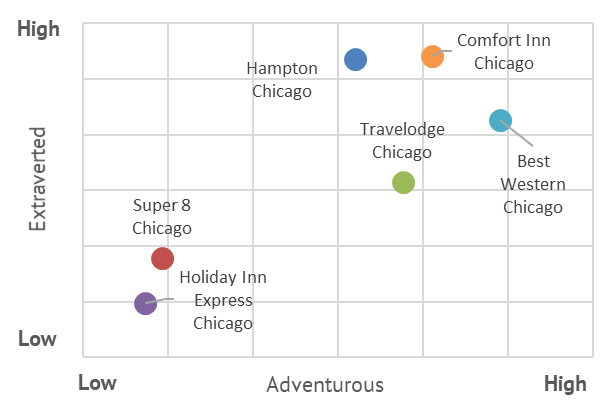
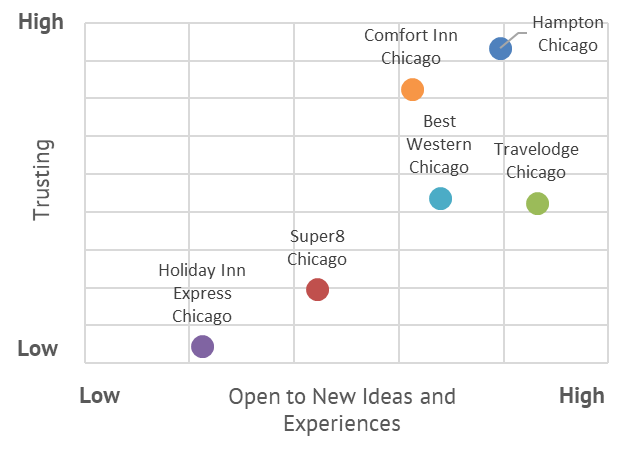
If we take a sample of other traits for the upscale market in San Francisco we can also see good distribution of traits. We see a more self-conscious and neurotic guest at the Marriot, for example, than the Regency. As expected, these two traits are correlated.
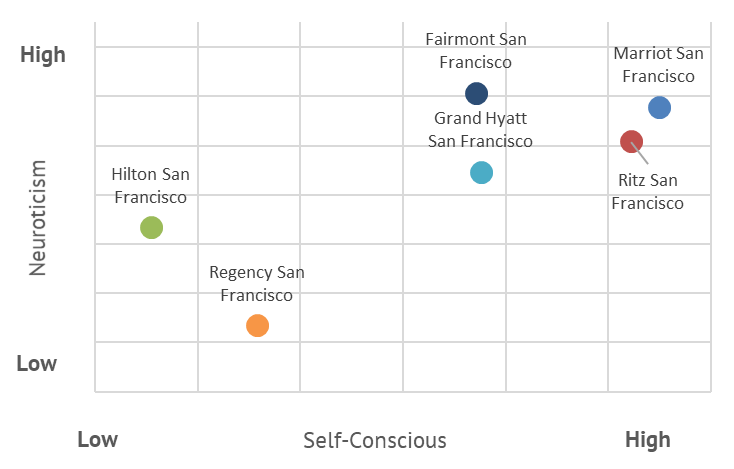
We can conclude that there are similarities at the category level, but nuances within that are likely material enough to target.
What about geography? It turns out, it plays a very important role. Although the relative relationship of traits seems to remain intact, there is a significant shift between markets. San Francisco guests tend to be more aggressive and money driven than those in Chicago. On the creative side, San Francisco guests score 20% higher around artistic preference.
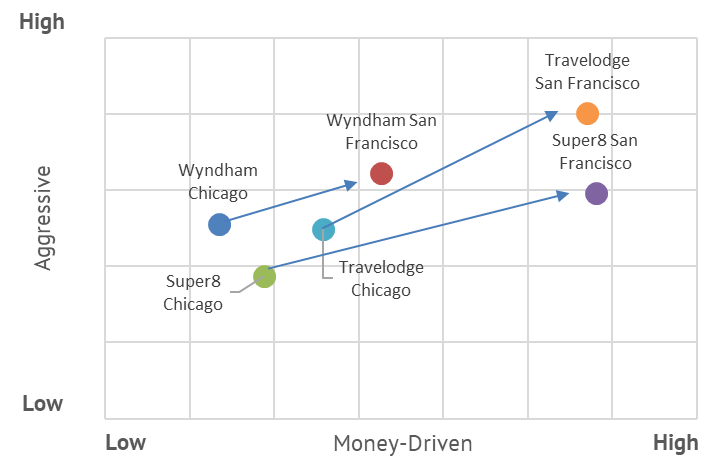
What if we bust the categories and look across all hotels? Can we find anything interesting? In the case of conscientiousness (hardworking and detail-oriented types) we see a steady rise correlated with a trend in hotel category (with some outliers). Conscientious guests are tidy, will pay attention to detail and are particular about planning. All things to note for the properties on the right of that chart.
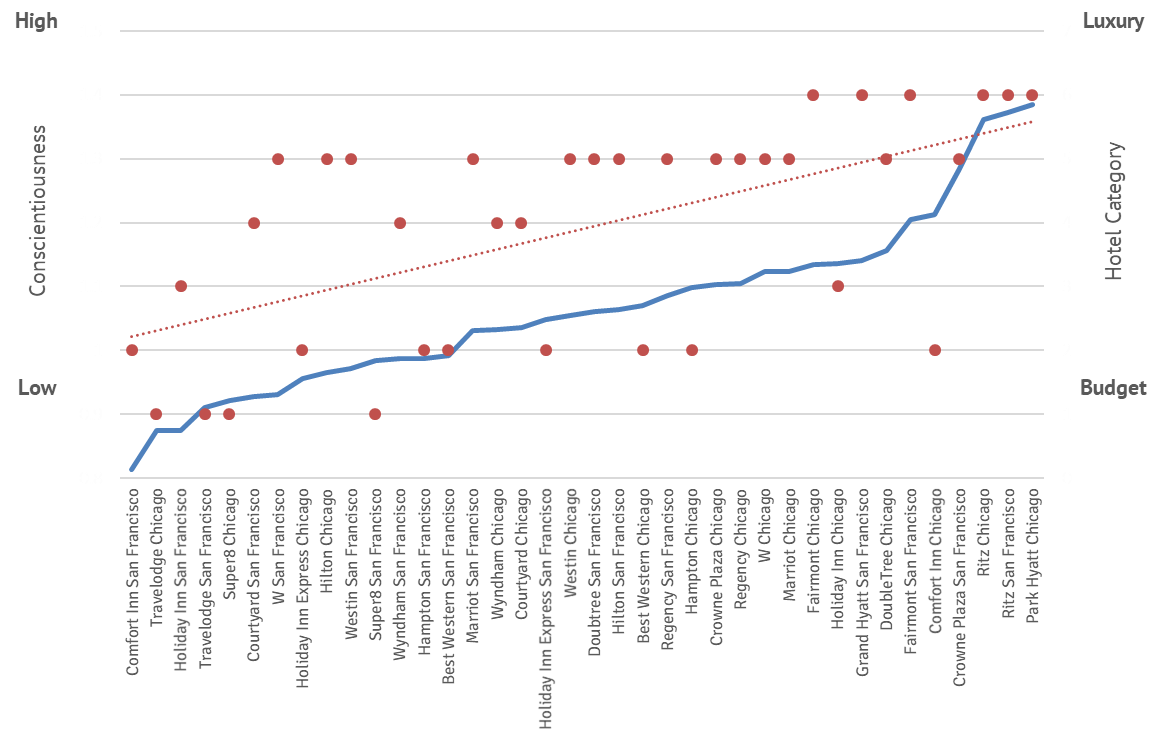
Revisiting are questions:
- Are the people who frequent certain brand hotels similar to each other? They are more similar than those who visit other classes of hotels, yes, but only until you “zoom in” a little more.
- Are they similar across geographies? Yes, at a brand level, but guests seem to be at a heightened, or lowered, level of the same traits depending on location.
- Do budget hotel guests differ from luxury? They do! Conscientiousness was a clear example of one such differentiator.
So what? Well, a few things:
- Keep in mind that all of this analysis was done purely on psychology Price and demographics were not considered. What you see are groupings of types of people. Knowing the type of a person helps us explain and predict their behaviour.
- We know a lot about our guests – all that information can make great impacts in personalized messaging and targeting;
- Brand is brand, but guests of the same brand differ between cities;
- We see guests making decisions based on brand, category, and price but not all the same time. What you lead with makes a difference to the guest you ultimately get.
